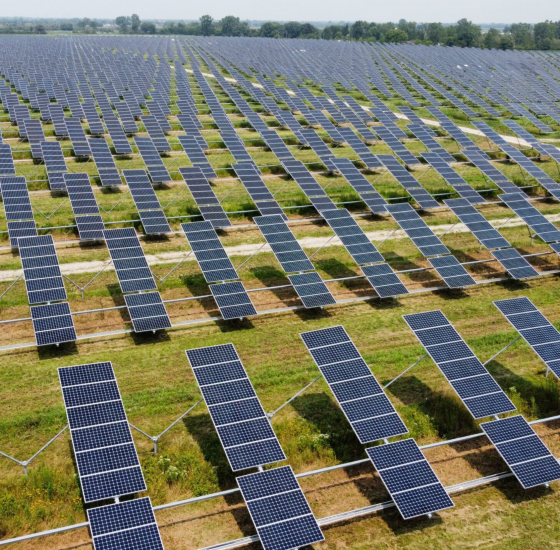The Intersection of Carbon Zero Consulting and Clean Energy Consulting
Helping companies reduce their energy costs and transition to net-zero emissions.
The Intersection of Carbon Zero Consulting and Clean Energy Consulting
Helping companies create and implement a clean energy procurement strategy to cost-effectively achieve their net carbon reduction targets
Clean Energy Consulting and Carbon Zero Consulting – Actionable Opportunities for Organizations to Profitably Accelerate Their Net-Zero Carbon Reduction Strategy
When an organization reports on their carbon emissions in an annual ESG report, they typically break down their emissions into the following three categories:
Scope 1 Emissions: Direct emissions, including fuel consumption on site
Scope 1 Emissions are emissions that occur on-site (such as the consumption of natural gas for heating). In Canada, they are directly paid for by corporations and are separately itemized on natural gas bills for entities not operating under regulatory compliance programs.
Scope 2 Emissions: Indirect emissions, including electricity consumption on site
Scope 2 Emissions are emissions that are produced offsite for a product that a corporation is the end consumer of, such as electricity. In Canada, the direct cost of these emissions are paid for by the electricity generator, however the vast majority (if not all) of these higher costs are passed on to consumers in the form of higher electricity prices. The dollar amount of this pass through is particularly pronounced in the provinces of Alberta, Saskatchewan, and Nova Scotia, where most electricity generation currently comes from carbon emitting sources like natural gas and coal.
Scope 3 Emissions: Other indirect emissions from waste and tenant utility consumption
Scope 3 Emissions represent the embedded carbon in the entire supply chain of a product, including upstream supplier practices, product transportation, downstream product usage, waste decomposition and disposal. The emissions associated with business travel and employee commuting are also considered Scope 3.
1
2
3
Scope 1 Emissions: Direct emissions, including fuel consumption on site
Scope 1 Emissions are emissions that occur on site (such as the consumption of natural gas for heating). In Canada, they are directly paid for by corporations, and are separately itemized on utility bills.
Scope 2 Emissions: Indirect emissions, including electricity consumption on site
Scope 2 Emissions are emissions that are produced offsite for a product that a corporation is the end consumer of, such as electricity. In Canada, the direct cost of these emissions are paid for by the electricity generator, however the vast majority (if not all) of these higher costs are passed on to consumers in the form of higher electricity prices. The dollar amount of this pass through is particularly pronounced in the provinces of Alberta, Saskatchewan, and Nova Scotia, where most electricity generation currently comes from carbon emitting sources like natural gas and coal.
Scope 3 Emissions: Other indirect emissions from waste and tenant utility consumption
Scope 3 Emissions represent the embedded carbon in the entire supply chain of a product, including upstream supplier practices, product transportation, downstream product usage, waste decomposition and disposal. The emissions associated with business travel and employee commuting are also considered Scope 3.


Identifying opportunities and implementing solutions to reduce an organizations carbon emissions from these three categories is a great place to start. However, some sources of carbon emissions do not have an actionable solution that can completely eliminate an organizations carbon emissions. For example, the electrification of heating reduces an organizations scope 1 emissions, but will still result in scope 2 emissions, the volume of which will vary greatly based on the generation mix of the provincial electricity grid. While electricity grids are currently transitioning to a zero-emission future, this process is expected to take decades, requiring organizations that desire faster carbon emissions reductions to seek accelerated solutions to help bridge the gap.

Most corporations have what is referred to as a net emissions reduction target, meaning that they can utilize carbon offsets generated from investments that reduce or remove carbon emissions to achieve their reduction targets. This enables corporations to pursue investments in more impactful, profitable, and actionable carbon reduction solutions to help offset the emissions that they create and are harder to reduce in other areas of their business. One path that many corporations have elected to pursuit is entering into bilateral agreements with large scale renewable energy projects to purchase the electricity and associated environmental attributes generated from these projects, referred to in the industry as virtual power purchase agreements.



While organizations that repeatably procure large volumes renewable energy have in house teams focused on these transactions, many large organizations do not possess this expertise and wish to gain access to these bilateral transaction opportunities. Many reputable organization partner with renewable energy experts to help structure and source these transactions, merging clean energy consulting and carbon zero consulting services, in order to implement the most profitable transaction for the corporation in a timely manner. In addition to achieving meaningful near-term carbon reductions for ESG reporting purposes, purchasing the electricity and environmental attributes generated from a large-scale renewable energy project can help your organization by: hedging your exposure to rising carbon and electricity prices and access a lower cost capital such as sustainability linked bonds.
